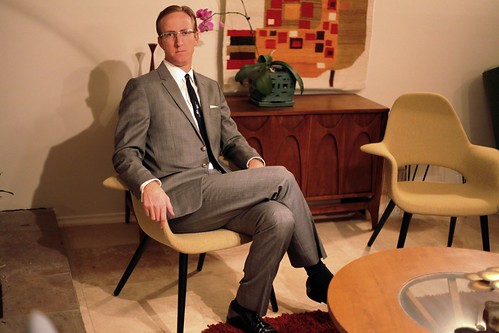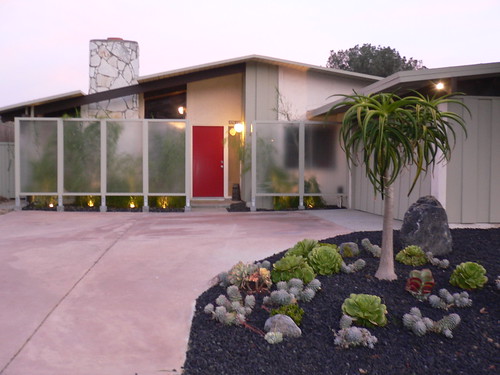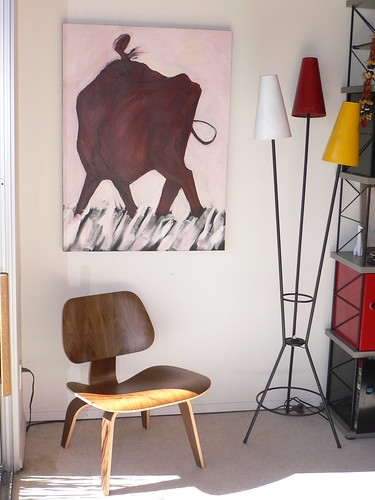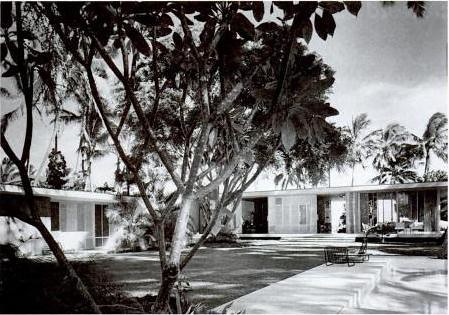Flickr contacts and facebook friends have always intrigued me. I mean, don't you ever wonder who they are? Why they like, or are part of, the Mid-Century community? What they do for a living and so on? Well, I do. From what I've found out, it's interesting.
Many times I look at someones photostream, or wall and start to build a character of what I think they might be like. Sometimes your right and sometimes your not. You'll never know though until you interview them for yourself. Now, don't get me wrong. With these realitively few questions, there's no way of truely knowing someone. So I'm not saying that I am probing into the depths of their being, but rather, giving you a general overview of one, or possible many aspects of their lives.
So here we go with Chimay Bleue.
Interview via email; Eric McGrew: Questions
Chimay Bleue: Answers
Q: Just to get us started off, would you like to share your name with us?
A: Sure. I'm Darren Bradley

Q: What is your profession?
A: I work for a large, multi-national defense and aerospace company, where I'm responsible for strategy and planning in one of the divisions.
Q: Is this your dream job?
A: I have a great job and feel very fortunate to have it. But I'm not sure that I'd call it my dream job. Growing up, I originally wanted to be an architect but was dissuaded from pursuing that avenue because I was horrible at math. Ironically, it seems most architects are bad at math so I'm not sure why that seemed so important at the time. Anyway, I then decided I wanted to be a diplomat because I liked politics and traveling, etc. I never ended up doing that, either. But what I do requires me to use a fair amount of math.
If I could decide today to do whatever I wanted, I'd probably be a photographer.
Q: Where did you grow up?
A: I was born in Honolulu, Hawaii, but I moved to San Diego when I was little. My dad was in the Navy. He retired in SD so we ended up staying here. I also spent a fair amount of my time in France - originally as an exchange student in high school and then for most of my college education.
Q: When did you start to get interested in Mid-Century design, and what influenced your interest?
A: I've always loved architecture and design of all kinds. I'm a city person and appreciate how buildings can change the vibe of a place.
I used to spend my summers in Toronto, Canada and that had a big influence on my admiration for modernism. I have snapshots somewhere that I took with a toy camera - I must have been about 10 years old at the time - of things like the Toronto City Hall, Eaton Centre, Canada Place... Later, visiting Expo 86 was also a seminal moment for me. I have very vivid memories of visiting all of those pavilions and the architecture of them made a huge impression on me
So I've always preferred modern design but also appreciate different styles, such as Craftsman, Art Deco, Secessionist, Art Nouveau...
When we first moved out here from France, my wife and I already had an appreciation for Mid-century modern but were more interested in Art Nouveau, and also sleek, European contemporary modern. But in San Diego, we intentionally sought out a style of architecture that embodied the character of southern California. We wanted a low-slung house with glass walls and a pool, with more of an organic feel. My wife, as a girl living in an apartment in Paris, had dreams of Ava Gardner and Greta Garbo lounging poolside in Hollywood. So when she ended up moving here, she wanted some of that. When in Rome...

Q: Who designed the house you live in?
A: William Krisel in 1959. Krisel was then partner with Dan Saxon Palmer of the firm Palmer & Krisel. Krisel designed many, many mid-century modern homes throughout Southern California - everything from modest tract housing and apartments to the homes of Dean Martin, Peter Lawford, and others.
Q:Did you look for a MCM home before you bought, or did you get into MCM after you bought your home?
A:We knew we wanted an MCM home from the beginning. We had plenty of time to research before we could finally afford one and we focused on this neighborhood, specifically. It took more than two years before the right house came up for sale. We bought it the day it was listed.
A few years before we finally bought a house, we had rented a vacation home in Palm Springs that was designed by William Krisel and we loved it. We realized then that this was what we had been looking for. With a little research, we found that the same architect had also designed homes in San Diego so we found those neighborhoods and focused our search.

Q:For decor in your home, do you try and stay authentic vintage, or just good quality MCM design?
A:At first, we had a more eclectic mix of contemporary modern, vintage MCM, and reproductions (and a fair amount of IKEA mixed in). But the fact is that the design and even the scale of MCM furniture and decor works the best here. And the more we learned about it, the more interested in / obsessed with it we became. So eventually, the newer pieces got swapped out with vintage pieces as we found them. That's been ongoing... and even now, if we find something we like at an auction or a yard sale, we'll find room for it and perhaps swap something else out.
Q:I noticed that you have a lot of photos of Krisel homes. Is there a particular reason why?
A:When I became interested in Krisel's designs in Palm Springs and was looking for a home in San Diego, I started researching his work and just found a treasure trove of incredible homes and other buildings that he had designed throughout the region, and I began taking pictures of it to record what I was finding. I eventually tracked him down to ask for some additional information, and that started off a close friendship that continues to this day. I still take every opportunity to find and photograph intact examples of his work because I have a strong admiration for his work.
Bill is one of the few designers or architects who was able to successfully deliver on the promise of modernism - to provide a better way of living and making it accessible and affordable to everyone.
Q:In your photos, you have a lot of "modern" architecture, and MCM architecture. Is this your favorite genre of design? If not, what is?
A:Yes, it most definitely is. MCM is my first love, and I appreciate contemporary modern design - especially when it demonstrates a clear lineage with MCM. But I do appreciate pretty much every sort of architectural style, and will take pictures of it if the mood strikes me.
About the only styles I really hate are post-modernism and the pseudo-historical stuff - like so many of the Spanish/Tuscan/Georgian/Colonial McMansions and tract homes that have popped up all over the place in the past decade.
Q:I find your photography to be very good. How did you pick up photography?
A:Thank you! I grew up loving photography as a child and took lots of courses on it in high school and college. I received my first SLR (a Yashica FX-7) when I was twelve. I was photographer on our school newspaper and spent a good part of my high school years in the darkroom. I also worked briefly in college as a darkroom tech.
But for a period in the 90s, I had stopped taking pictures entirely and didn't pick up a camera for years. When I moved to France in 1994, I didn't even bring a camera with me! But it was my interest in documenting MCM architecture that drove me back into it after a long hiatus.
Although I had a lot of previous experience in photography, I found I had to relearn a lot. Digital cameras behave quite differently from film. Also, architectural photography is a very precise field with its own set of rules and even subculture, which also requires a lot of specialized photographic equipment.
Initially, I was just taking snapshots of buildings. But the work of photographers such as Julius Shulman and Ernie Braun had such a big influence on my own perception and appreciation of modernism that I decided to teach myself architectural photography and acquired the tools to do it properly.
Q:In one of your comments, you mentioned that you don't like to use HDR, is there a specific reason why? Just curious...
A:Yeah, I understand its a matter of personal taste but I personally find that most HDR looks awful. It hurts my eyes to look at. If its done right,I do appreciate the extra dynamic range it can provide to a photograph. But most HDR photos I see don't look natural, and I really don't like the explosion of weird colors and surreal lighting that is the usual result.
Maybe it's because I learned the old fashioned way in a darkroom, but I much prefer dodging and burning to HDR. I think it looks a lot more natural and pleasing to the eye.

Q:Back on subject. Do you have any other artistic outlets?
A:I also paint on occasion when the mood strikes me. There are several examples of my paintings that can be seen in my house - notably the picture of the bull in my bedroom.
Q:Who is your favorite Mid-Century Designer of any genre?
A:Well, I've already talked about my admiration for Bill Krisel - as both a person and an architect. I'd have a hard time narrowing it down to just one, though. In architecture, my favorites are simple post & beam designs with lots of glass that have an almost zen-like, japanese sense of calm and peacefulness. Some of my favorite examples of this are Buff & Hensman's Thompson / Moseley Residence and their collaboration with Cal Straub for the Bass Residence (A&A Case Study House #20), Mies's Farnsworth House, Koenig's Stahl House (Case Study #22), Ellwood's Rosen Residence... Actually, about 30 or 40 houses come to mind but I won't bore you with the complete list.
My wife loves concrete brutalism and her list of favorites includes Le Corbusier, Lautner, etc.
Furniture and design-wise, I tend to favor Scandinavian designers, apparently, because my house and wish list contain a lot of Saarinen (ok, he's Finnish-American, I know), Jacobsen, Juhl, Wegner, Kjaerholm...
Q:If you could have any Mid-Century/Mod/Retro object (house, art, furniture, you name it), what would it be?
A:Another hard question, but while we're at it, why not shoot for the moon? I'd say Ossipoff's Blanche Hill House in Honolulu... alas, it's been demolished so that's never going to happen.

Q:Do you have any website's or blogs that you love to visit?
A:I have a list of websites and blogs I try to hit regularly, but don't get to them as often as I'd like. Certainly, yours is on the list, but also:
www.modernsandiego.com
blog.ounodesign.com
deedee914.blogspot.com
www.apartmenttherapy.com
myvintageaddiction.com
www.eichlernetwork.com
www.realphotographersforum.com
www.digitalrev.com
Q:What/Who is your favorite Mid-Century?:
A:Tv series: The Prisoner
A:Movie: Mon Oncle or Playtime by Tati
A:Musician/group: Martin Denny, Les Baxter, Arthur Lyman
Q:When you want Mid-Century, or Mid-Century inspired clothing, where do you look?
A:Mr. California, Ben Sherman, Penguin, Brooks Brothers
Q:As an avid skater of the past, do you still look at places and things and see their potential for skateability?
A:Yes, in fact, although I haven't been on a skateboard in years now. But just today, there was some nice concrete banks in the playground of my daughters school that I was eyeing while we were there for a picnic and I kept thinking about how fun they would have been to skate.
Thanks Darren for taking time out of your weekend to answer a few of my questions. It's been a true pleasure to get to know just a bit more.
I have to say that the interviews that I have done with people (for different reasons) are one of my favorite things to do. Especially when they are very informal, and no one is trying to trick the other person. It's with that in mind that I will continue to bring you interviews with different ones who are interested in all things Mid-Century. Also, because I have enjoyed the outcome of this interview, and because I had so many more questions arise, I will be doing a part 2 of Chimay Bleue's interview in the future. So stay tuned for that. I mean, I never would have thought that one of the answers would lead to him saying he had become friends with the famous architect William Krisel, who also just happened to build his house. Cool right!
If you'd like to get to know Darren and his lovely wife (Darren, I mean that with all due respect.), check out this video below. By the way, I think she should have had a bigger part in the interview. Her accent is just so cool. Know what...? Maybe I won't do a part 2 with Chimay Bleue... Maybe, I'll interview Mrs. Chimay Bleue and get her thoughts on "life, the universe, and everything..." oh yeah, some on Mid-Century too.
If you folks are looking for some information on William Krisel and his architecture, here are some links.
http://travel.latimes.com/articles/la-trw-krisel14feb14http://travel.latimes.com/articles/la-trw-krisel14feb14
http://www.palmspringslife.com/Palm-Springs-Life/February-2009/Masters-of-Modernism-The-Butterfly-Effect/
http://architechnophilia.blogspot.com/2010/03/william-krisel-architect.html
Some of the links in this post are affiliate links. By using these links you can get what you need/want and help Amidst Mod to continue providing info and inspirations.
No comments:
Post a Comment